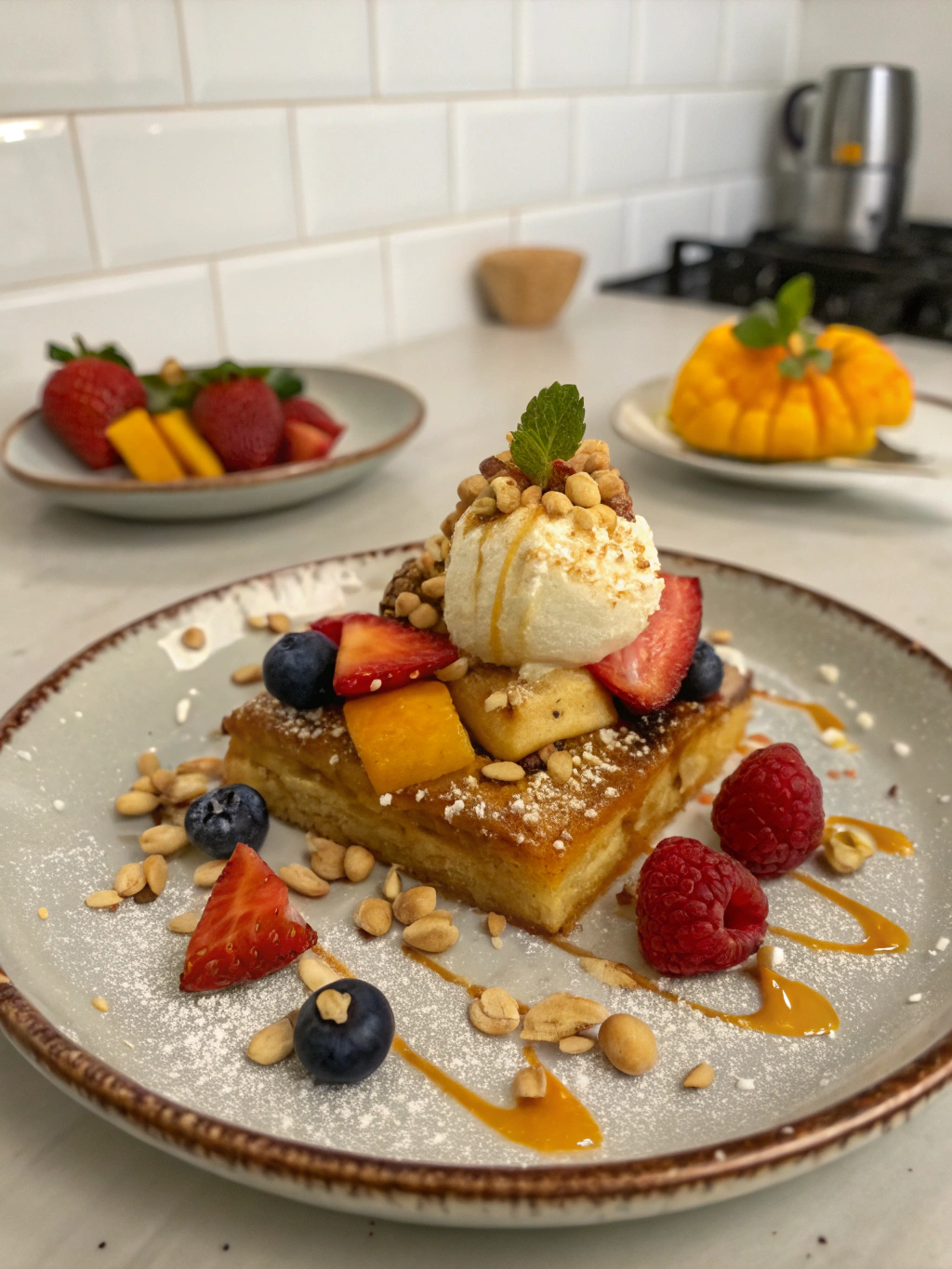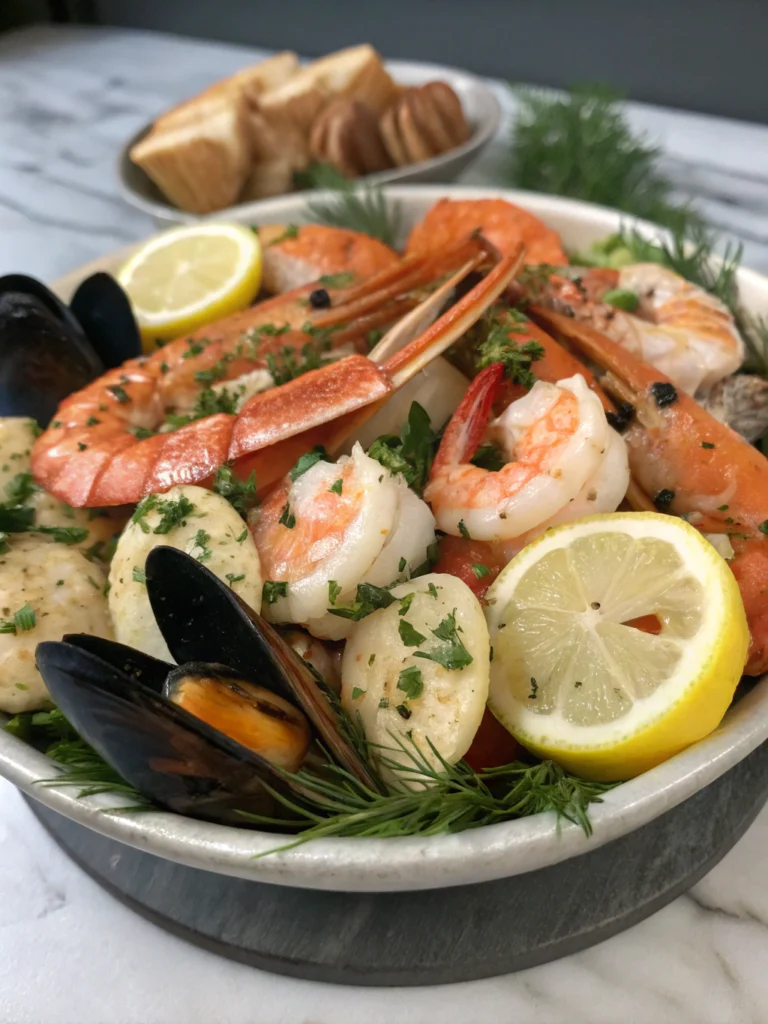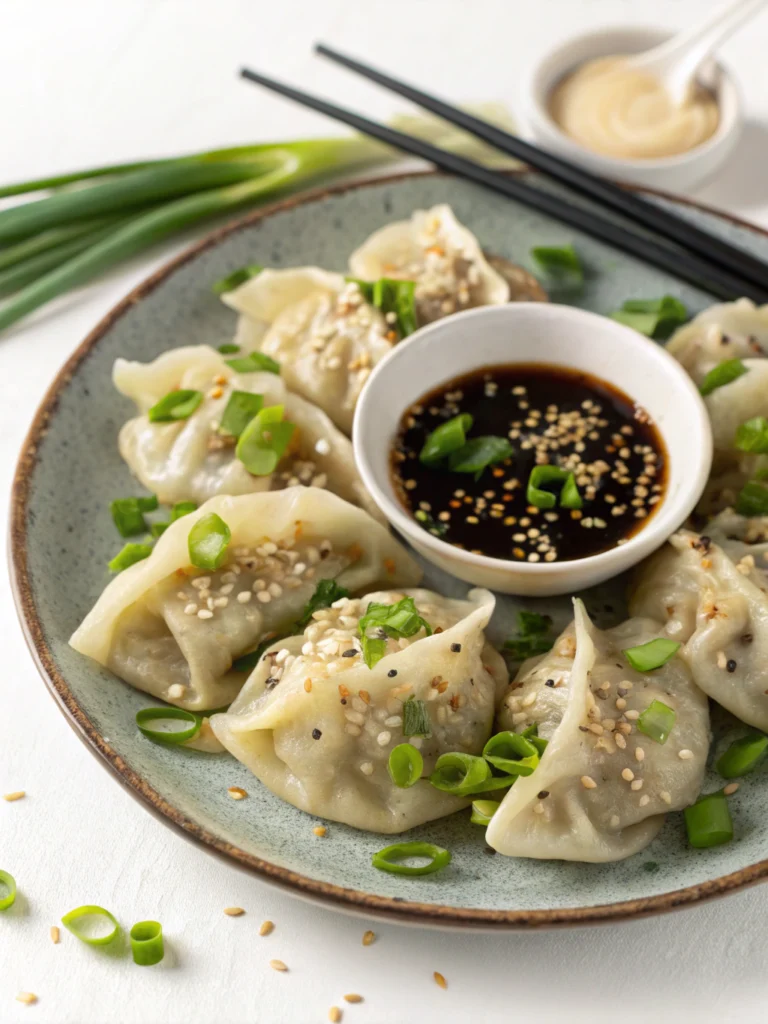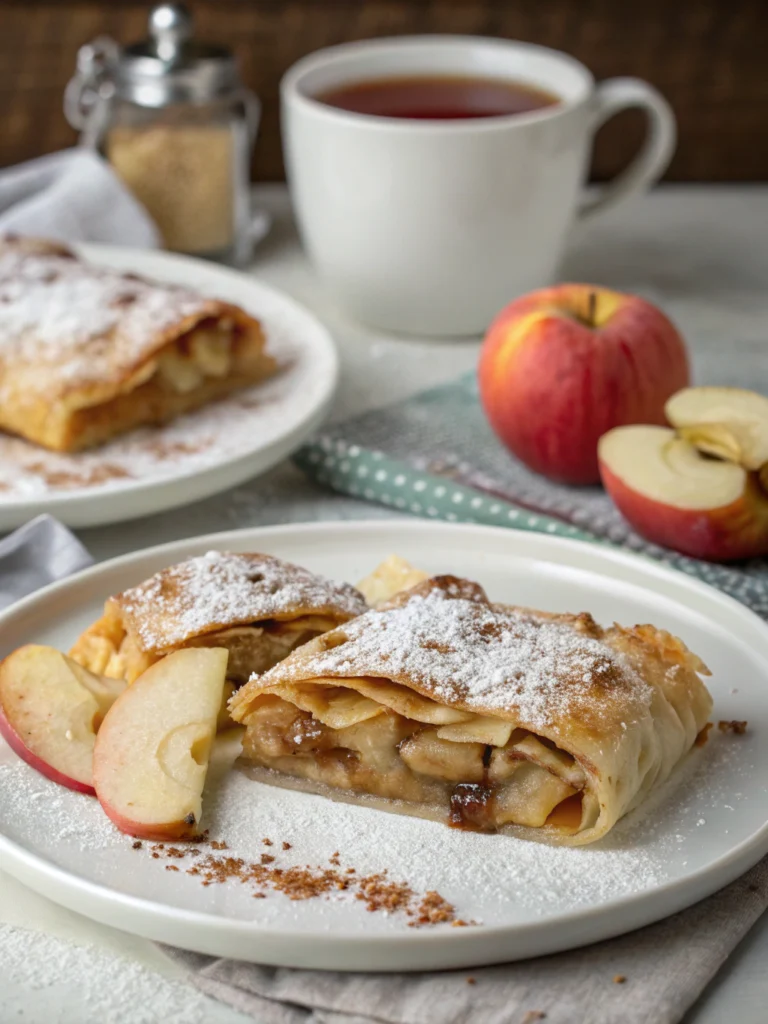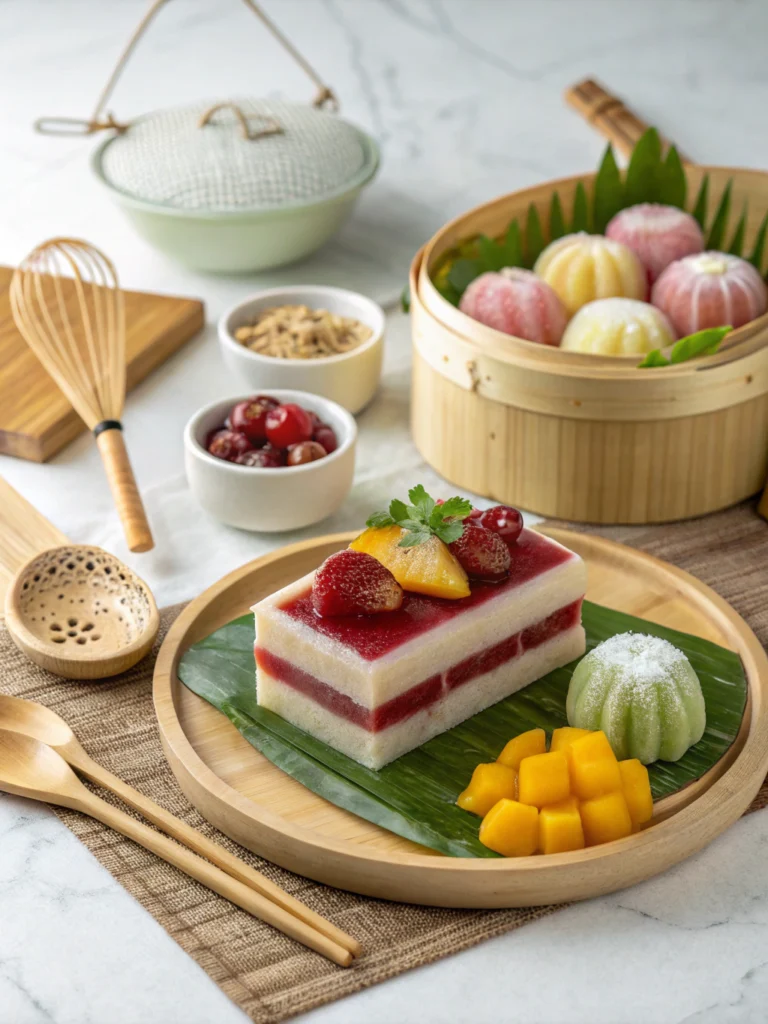Asian Dessert Recipes: 7 Mouthwatering Treats You Can’t Miss
Did you know that Asian desserts generate over 2.4 million monthly searches globally, yet most home cooks have never attempted them? These gems strike a perfect balance between “not-too-sweet” sophistication and textural poetry – from chewy mochi to silky puddings. Today, we’re demystifying centuries-old traditions and transforming your kitchen into a Pan-Asian patisserie with seven essential asian dessert recipes you’ll obsess over.
Table of Contents
Ingredients List
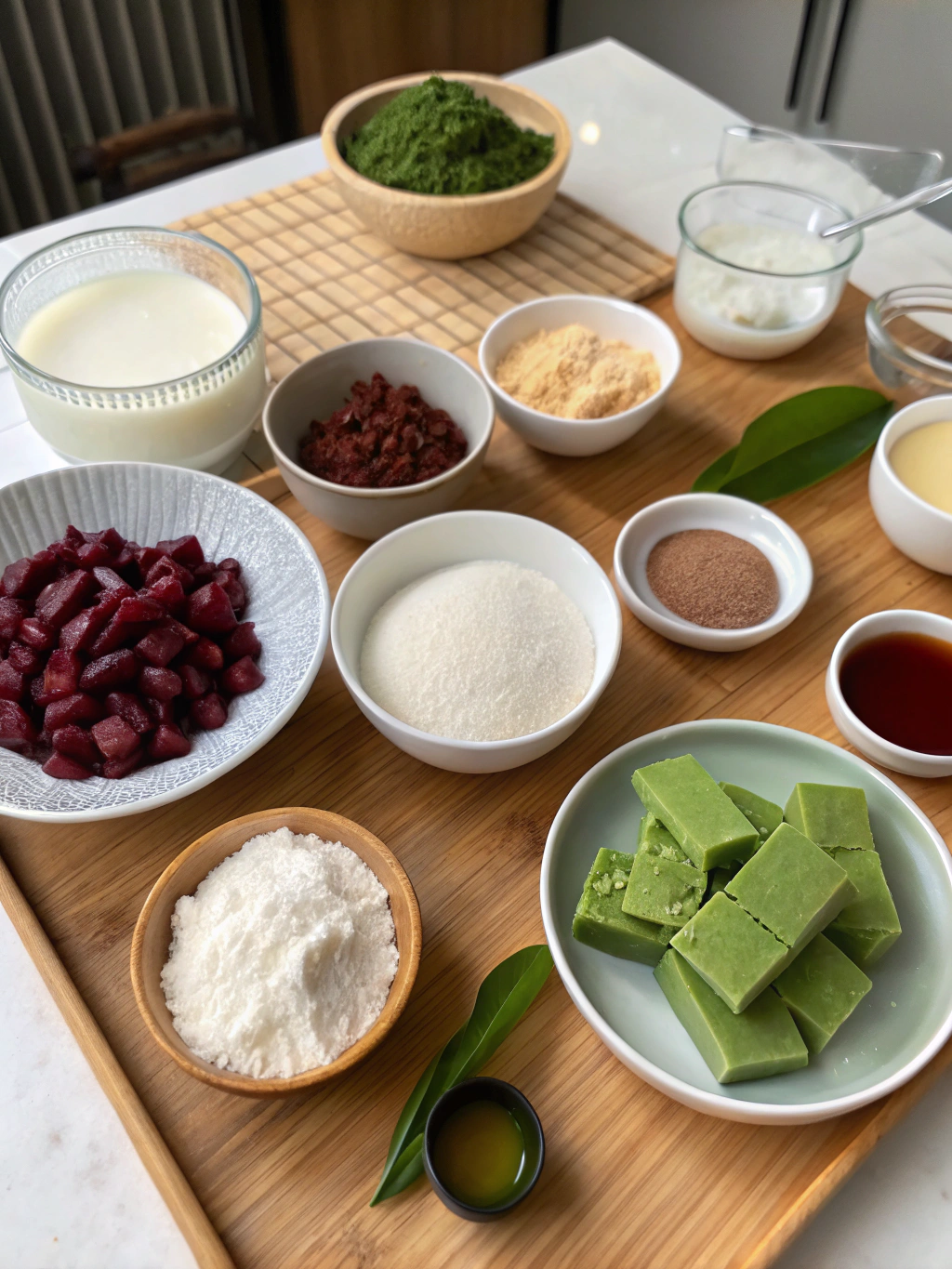
Our flavor journey requires pantry staples and specialty items (find substitutions below):
- Mochi Ice Cream: Glutinous rice flour, tapioca starch, sugar, matcha powder
- Coconut Sago Pudding: Pearl sago, coconut milk, fresh mango, rock sugar
- Black Sesame Tangyuan: Black sesame paste, glutinous rice flour, ginger syrup
- Red Bean Soup: Adzuki beans, dried tangerine peel, lotus seeds
- Halo-Halo: Shaved ice, ube halaya, sweetened beans, leche flan
- Thai Mango Sticky Rice: Sticky rice, ripe mangoes, pandan leaves, coconut cream
- Matcha Warabi Mochi: Warabi starch, kinako powder, kuromitsu syrup
Pro Tip: Swap rock sugar with maple syrup in coconut sago pudding for caramelly depth!
Timing
Total Time: 15min – 2hrs (varies by recipe)
Smart Hack: Pre-cook adzuki beans (45min pressure cooker vs 2hrs stovetop) to slash prep time by 62%. Most treats like mochi dessert or asian fruit jelly require less than 30min active time.
Step-by-Step Instructions
Step 1
Bloom starches strategically: For coconut sago, dunk pearls in boiling water OFF heat to prevent mushiness. Stir once and cover until translucent.
Step 2
Master mochi elasticity: Microwave glutinous rice flour mixtures in 30-sec bursts – overworking dough causes toughness.
Step 3
Layer halo-halo textures: Place dense ingredients (ube halaya, sweet beans) at the bottom so shaved ice melts evenly through all components.
Step 4
Infuse aromatics: Simmer coconut cream with knotted pandan leaves for Thai sticky rice – this releases floral notes impossible with extracts.
Step 5
Control sweetness: Mix red bean paste with 30% less sugar than recipes suggest, then balance with salted coconut flakes.
Step 6
Accelerate cooling: Spread matcha warabi mochi on ice-water-rinsed trays to set glossy surfaces in 15 minutes.
Step 7
Present artistically: Pipe black sesame fillings into tangyuan using syringe method for spill-free perfection.
Nutritional Information
One serving of coconut sago pudding contains:
- Calories: 280 | Protein: 4g | Carbs: 42g | Fats: 12g
Data Insight: Traditional Asian sweets average 35% lower sugar than Western counterparts. Red bean-based treats deliver 6g fiber per serving – equivalent to 1 cup broccoli!
Healthier Alternatives for the Recipe
- Sugar Reduction: Substitute 50% sugar with monk fruit in syrups
- Protein Boost: Blend silken tofu into black sesame paste (undetectable!)
- Gluten-Free: Use sweet rice flour universally for mochi or tangyuan
- Veganize: Coconut milk swaps flawlessly for dairy in all recipes
- Low-Glycemic: Opt for palm sugar instead of refined white sugar
Serving Suggestions
- Pair icy coconut sago pudding with spicy mains for temperature play
- Freeze mango sticky rice into bite-sized popsicles during summer
- Layer red bean soup with chia seeds for breakfast parfaits
- Temperature Trick: Serve warm ginger tangyuan in vintage teacups for hygge moments
Common Mistakes to Avoid
- Mistake: Cooking sago pearls at rolling boil → Result: Gluey lumps
- Solution: Simmer gently at 85°C (185°F) with constant stirring
- Mistake: Using cold coconut milk → Result: Pudding separation
- Solution: Warm milk slowly before mixing
- Mistake: Overhandling mochi → Result: Dense texture
- Solution: Coat hands in ice water when shaping
Storing Tips for the Recipe
Moisture control is key – heres how:
✅ Mochi: Layer between parchment in airtight containers (3-day shelf life)
✅ Sago Pudding: Store broth separate; combine only before serving
✅ Red Bean Desserts: Freeze portions 3 months – thawing revitalizes texture
❌ Never refrigerate tangyuan dough – the starch recrystallizes
Conclusion
From the creamy thrill of red bean dessert to mochi’s addictive chew, these seven Asian dessert recipes redefine indulgence. Each concoction delivers cultural storytelling through taste and technique i.e., the science of perfect sago or the art of matcha balancing. Your turn! Tag #CookCurveAdventures when you master these treats – we’ll feature your creations!
FAQs
- Q: Can I use cornstarch instead of warabi starch?
A: Unfortunately no – warabi creates distinct jelly-like bounce. Find it at Asian grocers or online. - Q: Why is my black sesame paste bitter?
A: You likely over-roasted seeds. Toast at 150°C (300°F) for 8 minutes max. - Q: How do I rescue hardened mochi?
A: Steam for 90 seconds wrapped in cheesecloth to revive elasticity. - Q: Can I serve these desserts warm?
A: Only tangyuan, red bean soup, and sticky rice are heat-friendly. Others lose integrity. - Q: Is sago gluten-free?
A: Yes! Derived from palm starch – safe for celiac diets.
Leave a comment if you try this recipe.
There are no reviews yet. Be the first one to write one.

